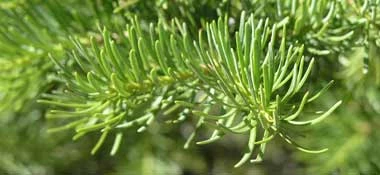
Sarah Zenner/NPS Photo |
|
Everyone knows that forests contain trees. The forest type depends on many factors, including climate, topography, geography and soil type. Forests may contain just one or two species of trees in large stands, or mix hundreds of different species together. Each forest has a variety of plants and animals that are all part of the forest community. In Grand Teton National Park, there are forest communities with different tree species and associated wildlife. Some conifers, such as the whitebark and limber pines, sub-alpine fir, and Engelmann spruce can survive the cold windy slopes of the alpine zone to around 10,000 feet. Other conifers like the lodgepole and limber pines, Douglas fir, and blue spruce are more commonly found on the valley floor. Deciduous trees including aspens, cottonwoods, alders and willows prefer the moist soils found along the rivers and lakeshores. The park's forests generally contain two or three different types of trees growing together in a specific habitat type. These forests transition between one another in zones called ecotones. Some animals, like the red squirrel, pine marten, and black bear spend most of their time in the forests. Others, such as moose, elk and wolves, seek the forest for shade and shelter during the day and move out to the sagebrush or meadows to feed in the early mornings and evenings. Forest communities stabilize the soil, create homes and food for wildlife, provide nutrients and carbon dioxide to the ecosystem, and create beauty and enjoyment for us all. |
Last updated: February 24, 2015
